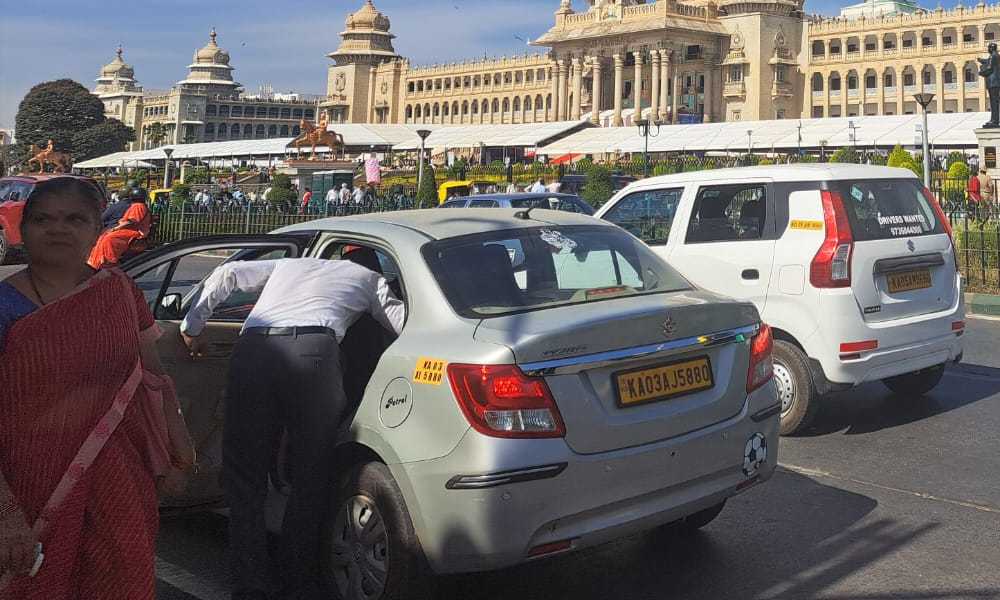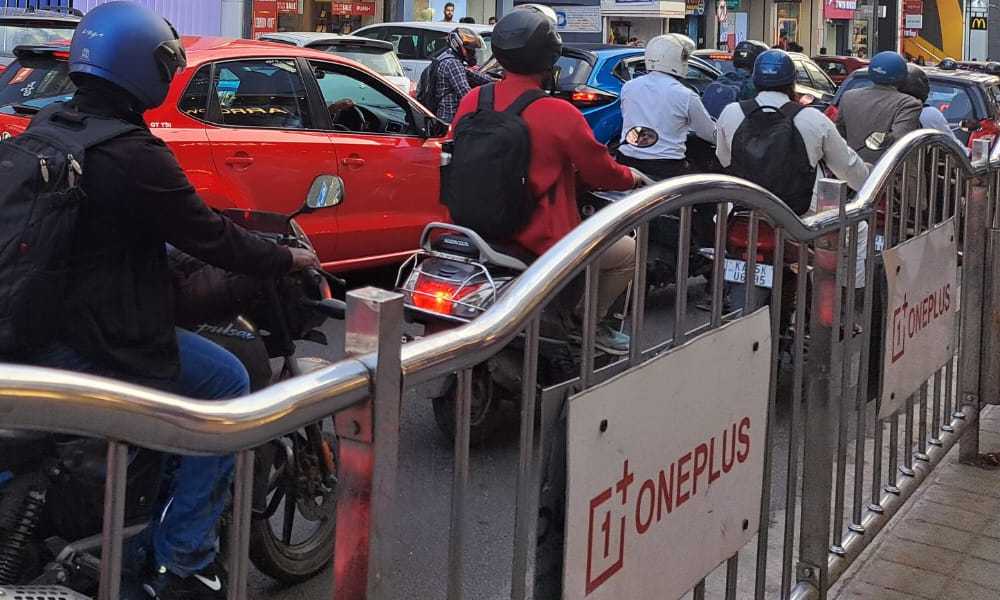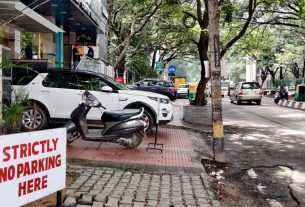Road rage needs to be tackled as a separate crime and dedicated laws must be formed to handle such cases better, experts say.
You are always late. The traffic is always high. The clock is ticking really fast and you can’t get to your meeting in time. The slightest provocation boils your blood and any small hurdle triggers you to react. Road rage is the new big bumper on the road.
Road rage incidents have become common in the city. While more than 4000 cases were registered in Bangalore in 2023, under various sections that count as ‘road rage’; 702 such cases have been registered this year till February. According to the City Traffic Police officials, an average of 14-15 cases of ‘reckless driving’ are registered on a daily basis in Bangalore city.
Anil Kumar Grampurohit, Traffic Inspector, Bangalore, said that there is no particular section under which road rage cases are registered. “There is no term like road rage in the Indian Penal Code (IPC) and therefore no mention of punishment or fine for such cases. The traffic police register cases that involve violence or brawl in the traffic or of voluntarily causing hurt to others under various sections of the IPC.”
According to Arrive Alive, a road users’ campaign platform, road rage can be defined as “an incident in which an angry or impatient motorist or passenger intentionally injures or kills another motorist, passenger or pedestrian, or attempts or threatens to injure or kill another motorist, passenger or pedestrian.” In this context, a road rage incident can be differentiated from other traffic incidents by its wilful and criminal nature.
“Cases of negligent driving are registered under section 279 of the IPC while section 337 comes into play when a person puts the safety of others at risk with their acts. The law and order police also register cases under section 337 and 338 for causing grievous hurt under the latter section. The traffic police register cases according to the gravity of the case; in some instances, sections 388 and 387 are invoked for extortion or threatening a person.” Anil Kumar explained.
Research by Indian Driving School suggests that most drivers in the country have a feeling of “Road Rage” because it is a cultural norm. “Angst and frustration while driving on Indian roads comes naturally which translates into road rage. People learn this behavior from childhood when being driven by parents and adults,” research concludes.
Dr. Surya Prasad, psychiatrist at iBrains, centre for precision neuropsychiatry, Bangalore suggested that there are numerous psychological reasons behind the increasing road rage incidents.
“Overcrowding of roads, lack of civic sense and high stress levels are some of the biggest factors behind road rage. Mental illness is rarely the reason behind road rage, it is the above factors that influence people’s behavior on roads and otherwise,” he said.
Nikhil, a working professional said that it has now become more common for people to indulge in fights and brawls on the roads. He suggested that such cases mostly happen in overcrowded places.
“I have not gotten into a violent fight so far but yes I have had quarrels a few times on the roads. It is just that when someone does or says something or follows you, honks continuously or drives in a rash manner, one gets annoyed and sometimes these small quarrels become more serious and people get into physical fights. No matter how calm you are, sometimes the situation is so that you have to speak up,” he said.
Traffic experts say that road rage should be treated as a separate crime altogether and laws should be made to deal with the issue as a whole.
Anurag Kulshreshtha, president, TRAX, an NGO working for road safety said, “Poor lane discipline and poor enforcement of traffic rules are the main reasons behind rash driving which eventually leads to violence and road rage. There is a general celebration of speed and rash driving when we say things like ‘ghanto ka safar minton mein’ which means to cover a distance that takes hours in minutes. Governments and authorities have to take this issue seriously, it has to be dealt with now.”
Dr. Chandragupta, Additional Commissioner of Police (crime), Bangalore said the traffic police register cases of anything that happens on the roads and not the law and order police. He said that the data of ‘road rage’ is also maintained by the traffic police.

Road rage: explained
Road rage and the approach of other countries
Incidence of road rage have increased in the past decade the world over. According to a survey by The Zebra, an insurance platform, 92 percent motorists witnessed an act of road rage in the US in 2023.
Anil Kumar Grampurohit said road rage is considered a menace because it can lead to physical injuries and in some cases to death too. Many countries all over the world including U.S, Canada, Australia, England, Ireland, Japan, and New Zealand are taking steps to find a solution. However, approaches to the problem vary, reflecting the different cultural norms of the countries.
Road rage: Sections of IPC and prescribed punishment
Under Section 160 which describes the punishment for committing affray, a jail term of up to a month with a fine of up to Rs. 100 can be levied. Under Section 268 for public nuisance and Section 283 for danger or obstruction in public way or line of navigation, a fine of up to Rs. 200 can be levied.
Other sections like 294 for obscene acts and songs in a public place can attract up to three months of imprisonment.
Sections invoked when a person is injured
Sections of the IPC are invoked in cases of road rage which involve Section 323 and 325 for voluntarily causing hurt and grievous hurt, respectively. While section 334 is invoked in case of ‘unintentionally causing harm or hurt’. However, under such cases, the report is filed and dealt with by the law and order police and not the traffic police.
Charges of criminal intimidation under section 503 can be invoked when a person threatens another person with any injury to him, his reputation or property. Section 510 is invoked against misconduct in public by a drunken person.
Possible solutions
“Society, at large, should be taught more patience. Time management, empathy, emotional control or regulation, stress tolerance are a few things that need to be inculcated within individuals and in the society, as a whole, to deal with problems like road rage,” Dr. Surya Prasad said.
However, laws have to be made clear for prevention of such incidents. “One of the best ways to avoid becoming a victim of road rage is to avoid responding, avoid making eye-contact. It might happen that what seems to be harassment in one spot may be a simple mistake. Don’t allow driving to become a competition.
Before all, legislations should be made more clear and stringent. Unambiguous laws and penalties are needed and public needs to be educated about its legal consequences. Driver education courses should be made more approachable and taught seriously,” Anil Kumar said.






